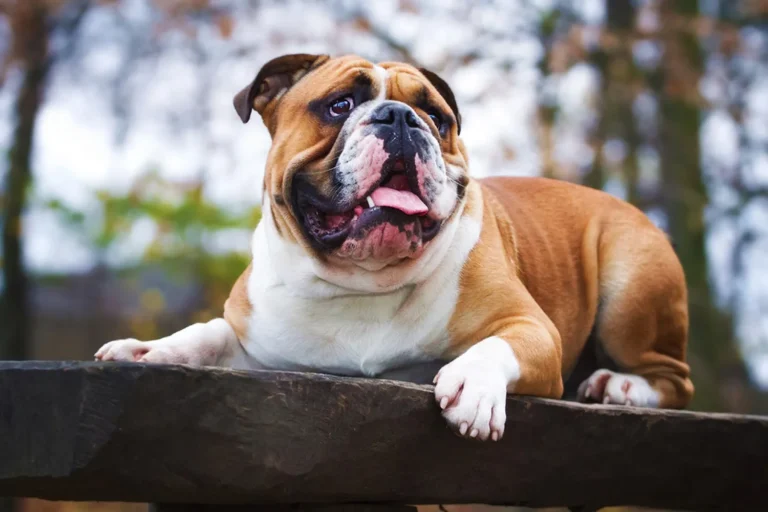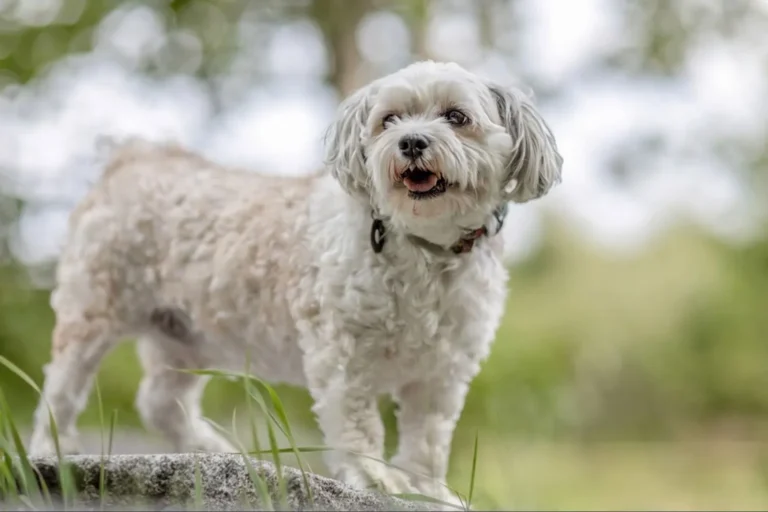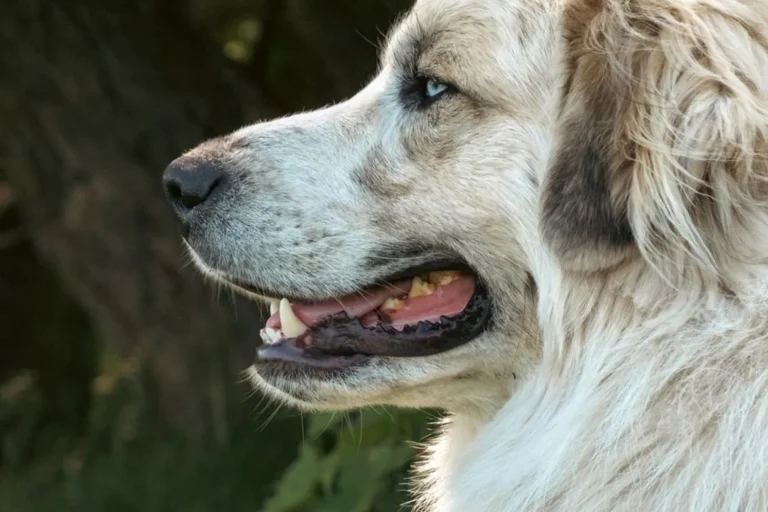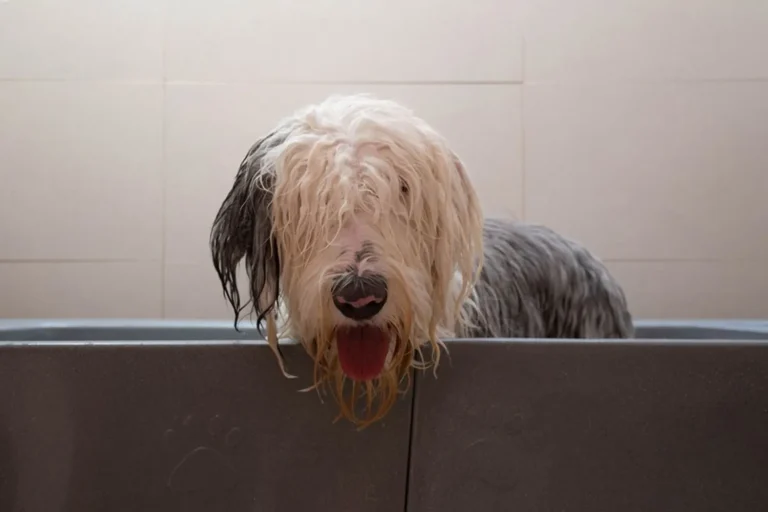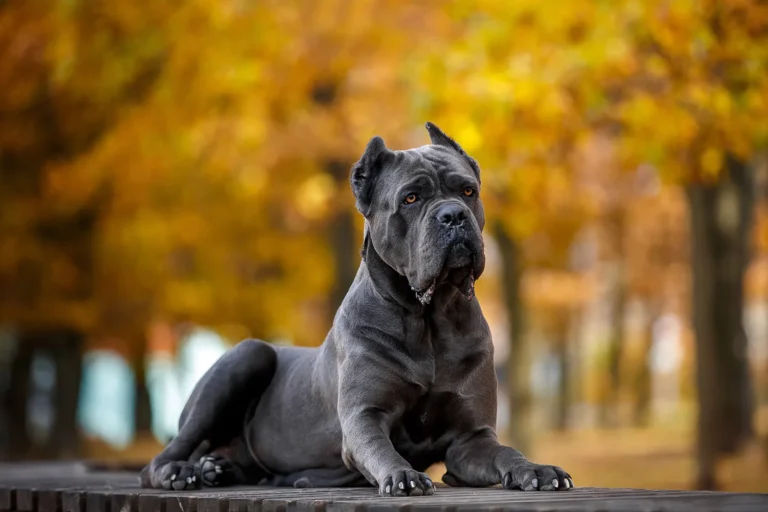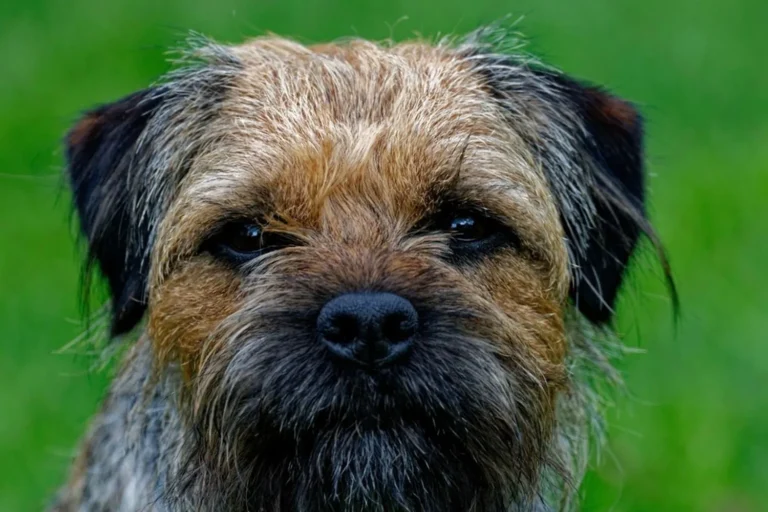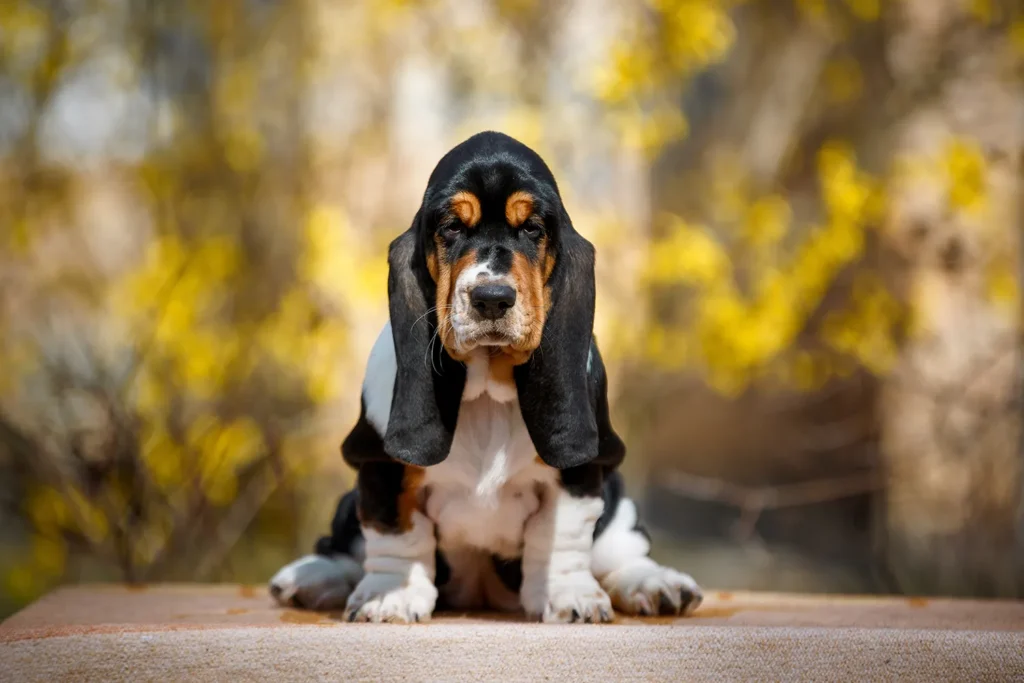
Bred for hunting, the Basset Hound is one of those dogs you can spot from a mile away those long, droopy ears, soulful eyes, and that low, sturdy body just shuffle right into your heart. Originally developed to track scent trails close to the ground, they’re still used to hunt small game in parts of the US, but you’ll just as easily find them snoring on a family couch. I once walked with a friend’s Basset who picked up the scent of a rabbit that must’ve passed through ten minutes earlier; we ended up on a slow motion adventure that circled the whole park.
Despite their laid back vibe, these dogs are nose first explorers and need steady, sniffy walks and a bit of mental work think scent games in the yard or a treat puzzle. Training goes best with patience, a sense of humor, and very tasty rewards (they can be charmingly stubborn). Keep an eye on their ears and skin folds, have a drool cloth handy, and watch their weight to protect those joints and that long back ramps or avoiding too many stairs can help. They’re gentle, affectionate companions with a big, musical bay, so give them love, a good routine, and a chance to follow that fantastic nose, and they’ll give you their whole heart right back.
What is the history and origin of the Basset Hound?
If you’ve ever watched a Basset amble down the sidewalk with those velvet ears and that determined little nose, you can almost feel the centuries behind them. These dogs didn’t just wander into modern life; they’ve been padding through the history books for a very long time. The first recorded mention pops up in 1585, in an illustrated hunting book by Jacques du Fouilloux. His pages didn’t just show Bassets at work they helped fan the flames of their early popularity among hunters who needed a tireless tracker that could work close to the ground.
Bassets are thought to descend from the St Hubert Hound, which later gave rise to the modern Bloodhound. It explains so much: the legendary nose, the patient, methodical tracking, and that lovable, wrinkly expression. Even the name tells a story. “Basset” comes from the French word for “low,” and it fits these dogs are practically built for hugging the earth. That low frame lets them comb through brush and bramble, heads down, ears sweeping scent toward their nose. I remember hiking with a friend’s Basset named Gus, who once “locked on” to a rabbit trail and led us like a little four legged compass for a solid fifteen minutes. He wasn’t fast but he was unstoppable.
Originally, Bassets were most popular with French aristocracy, often seen in organized hunts where their steady pace allowed hunters to follow on foot. Picture a grand estate, riders and walkers in muted coats, and those low slung hounds trailing hare with deep, musical voices. A breeder I met in California once kept a framed print of a French hunting scene in their office tiny Bassets, big hedgerows, and a lot of proud noses to the ground. It felt like opening a door into their past.
By the mid-19th century, Bassets had crossed the Channel to Britain. Lord Galway imported them in 1866, though it took a few more years until 1875-before they were shown off at an English dog show. The name Sir Everett Millais comes up a lot here; he imported Bassets and started a breeding program so influential that he’s often called the father of the breed in England. From there, momentum built. The Kennel Club accepted the breed in 1882, and across the Atlantic, the American Kennel Club registered Basset Hounds in 1885, with formal recognition following in 1916.
In the U.S., the Basset’s big moment came when pop culture fell in love with that unmistakable face. The Hush Puppy brand turned the Basset into an American icon. My grandfather kept a pair of those shoes in the hall closet, and I can still picture the droopy eyed hound on the box my first “introduction” to the breed as a kid. That gentle, slightly melancholy look fooled me into thinking they were sleepy couch potatoes. Spoiler: they are calm, but put them on a scent and they switch into work mode like a detective on a case.
Today, Basset Hounds are ranked 28th out of 155 breeds popular enough that you’ll spot them at the park, but still special enough to turn heads. If their history tugs at your heart, here’s a practical tip from someone who has been pulled down more than one sidewalk by a determined nose: plan for that scent driven brain. Keep fences secure, use a sturdy harness, and be patient with training food rewards work wonders. And don’t forget ear care; those gorgeous ears collect every leaf, burr, and smell on the block. It’s all part of living with a little piece of living history low to the ground, high on charm.
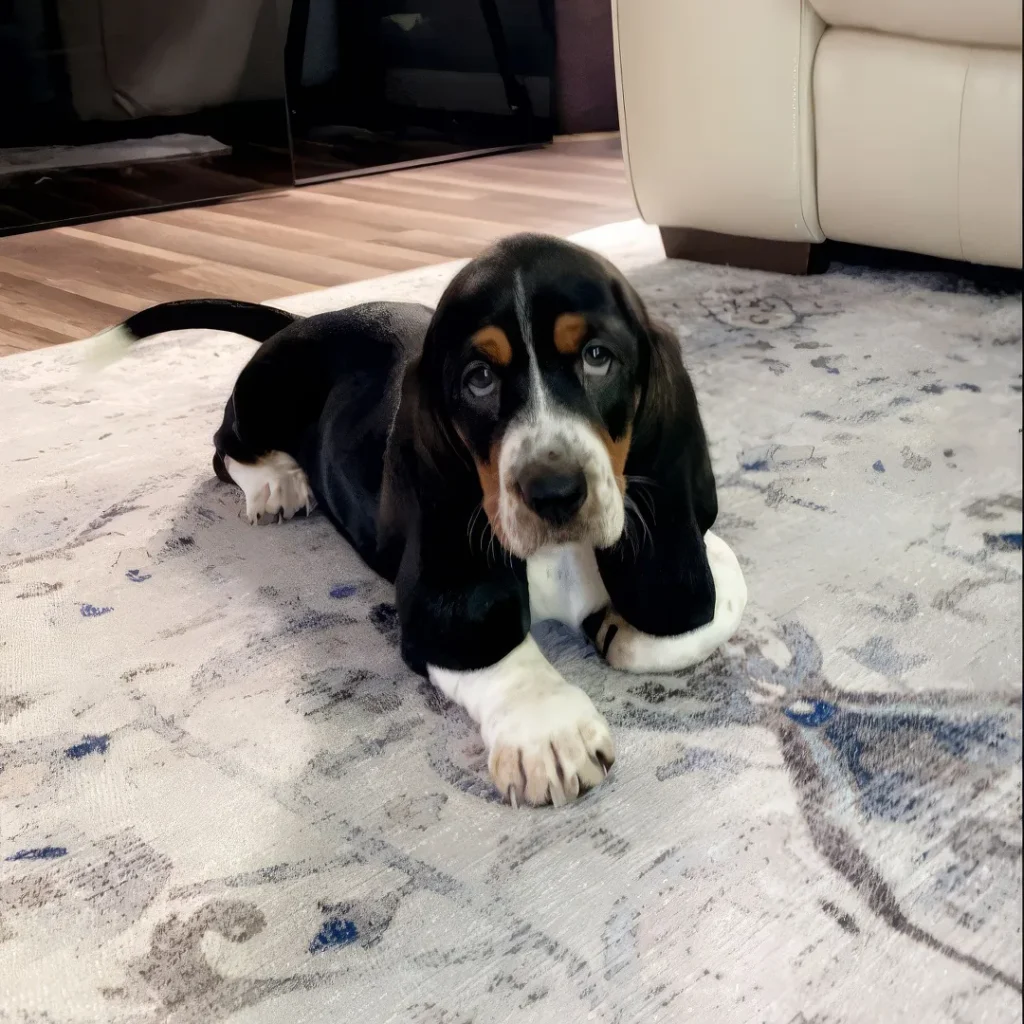
What Is a Basset Hound?
You’ll be right in guessing the Basset Hound is a laid back soul, even though it comes from proud hunting stock. These dogs adapt beautifully to life in houses and apartments. Mine could spend an entire Sunday afternoon draped over the couch like a floppy blanket, only lifting an eyebrow when the treat jar rattles. They’re perfectly content to be professional loungers, but don’t let the sleepy look fool you when a scent tickles that big nose, their inner tracker wakes right up.
Physically, the Basset is unmistakable: a short legged, heavy boned hound with long ears, a sturdy body, and eyes that could convince you to share your last bite of sandwich. They’re part of the hound family and are one of six recognised basset type breeds that originated in France. Those signature ears actually help funnel scents toward their nose clever design for a dog bred to follow trails low and slow. I once set up a little “scent trail” with bits of kibble under cups around the living room; it turned into the most earnest, adorable detective work I’ve ever seen.
As pets, they’re calm companions who do best with gentle, consistent routines. A couple of unhurried sniffy walks a day, plus some puzzle toys or scent games, keep them happy. They can be a bit stubborn and that famous hound “bay” is real so patient, reward based training is your friend. If you live in an apartment, plan for elevator rides or take it easy on stairs to protect those low slung bodies. And one last tip from experience: when a Basset catches a whiff of something fascinating, recall becomes optional, so a long line in open areas is a lifesaver.
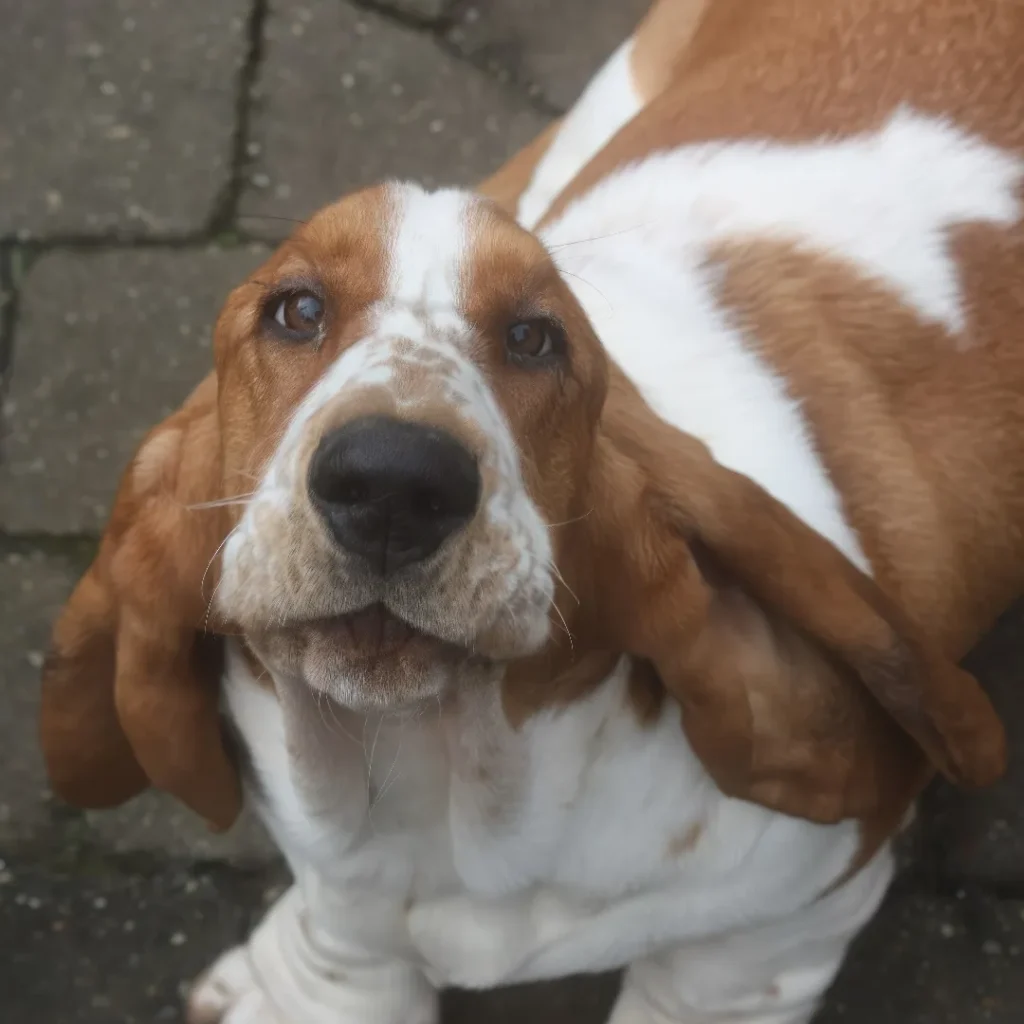
Who Is a Basset Hound Best For?
If your home is big on warm hellos, slow mornings, and family cuddle time, a Basset Hound will fit right in. These gentle souls are famously friendly with everyone kids, adults, and even the family cat if introduced thoughtfully. I once watched my friend’s Basset let three toddlers pile around him like he was a living beanbag; he just sighed, wagged his tail, and soaked up the attention. They’re laid back housemates who love lounging, but don’t let those droopy eyes fool you they perk up for a good sniffy adventure outside and are happiest with a couple of unhurried walks each day.
Bassets are outgoing and typically get along well with strangers and other dogs, making them great companions for sociable households. They’re also a good fit for first time owners who prefer a friendly, low drama dog and don’t need a jogging buddy. Think ambling strolls and “nose led” explorations over sprints. Training goes best with patience and treats when a Basset’s nose catches a scent, their ears seem to switch off. I learned to keep snacks handy and to laugh at those stubborn moments.
A few practical notes: they can drool a bit, their long ears need regular cleaning, and their long backs do better with limited stairs and no big jumps. They love company, so if you’re gone all day every day, consider doggy daycare or a midday walker. And yes, that famous Basset “bay” is charming just make sure your neighbors agree!

Basset Hound Grooming and Shedding
One of the big perks of living with a Basset Hound is that smooth, short coat. It tends to shrug off water and dirt, which means less time scrubbing and more time snuggling. These dogs were bred to trail game through brush and weather, so that coat does a good job protecting them from the elements. After a muddy park loop, I can often let my Basset shake it off, give a quick towel rub, and he’s presentable again at least by hound standards.
That famously droopy look comes from loose, elastic skin, especially around the face. It’s adorable, but it does need a little daily attention. I keep a soft cloth by the door and give the facial wrinkles a quick wipe once a day, then pat them dry so moisture doesn’t hang around. If you skip this, you might notice a yeasty smell or irritation. And yes, there will be drool. I stash microfiber towels in a few rooms and tie on a bandana before meals or car rides saves me from finding “slobber art” on the wall later.
Bassets come in a variety of colors. Most folks picture the classic tri color (tan, black, and white), but I’ve met a striking red and white gentleman at our farmers’ market who looked like he stepped out of a vintage painting. Brown and white is common too; whatever the color, the coat itself is low drama.
Shedding is year round, with a little extra during seasonal changes. A weekly brush keeps the coat healthy and the tumbleweeds under control. I like a rubber curry brush or a hound glove it lifts loose hair and distributes natural oils, and my dog melts into it like a spa day. Ten minutes on the back, chest, and those low slung sides does wonders. I keep a lint roller in the car and call it my “Basset tax.”
Ears are the biggie. Those long, velvety flaps can sweep up dirt and trap moisture. I do a quick wipe after walks if they’ve been dragging through grass, and once a week I use a vet approved ear cleaner: squirt, massage the base, let the shake happen, then wipe the outer ear with cotton pads. Skip the cotton swabs too risky. Watch for redness, odor, or head shaking; that can signal an infection. A breeder I spoke with in California swears by lifting the ear flaps for a minute after baths to let air flow I’ve adopted that trick and it helps.
Teeth and nails are pretty standard: brush teeth two to three times a week with dog toothpaste, and trim nails every few weeks. Bassets are low to the ground, so you’ll hear that “click click” on the floor sooner than you think. If the nails are dark, trim tiny amounts or use a nail grinder. Don’t forget dewclaws if they have them. I toss a dental chew after brushing as a “thank you” bribe.
Baths are as needed about once a month or when “eau de hound” rolls in. Use a gentle dog shampoo, rinse thoroughly, and dry the wrinkles and ears well. I pop a cotton ball lightly in each ear during baths to keep water out, a tip a groomer once showed me. Fresh bedding and a quick wipe down after rainy walks also keep that signature hound smell at bay.
With a little ear care, a daily face wipe, and a weekly brush, Basset grooming stays simple. It’s a short routine that saves on vet visits and keeps that lovable, droopy sidekick looking and feeling great.
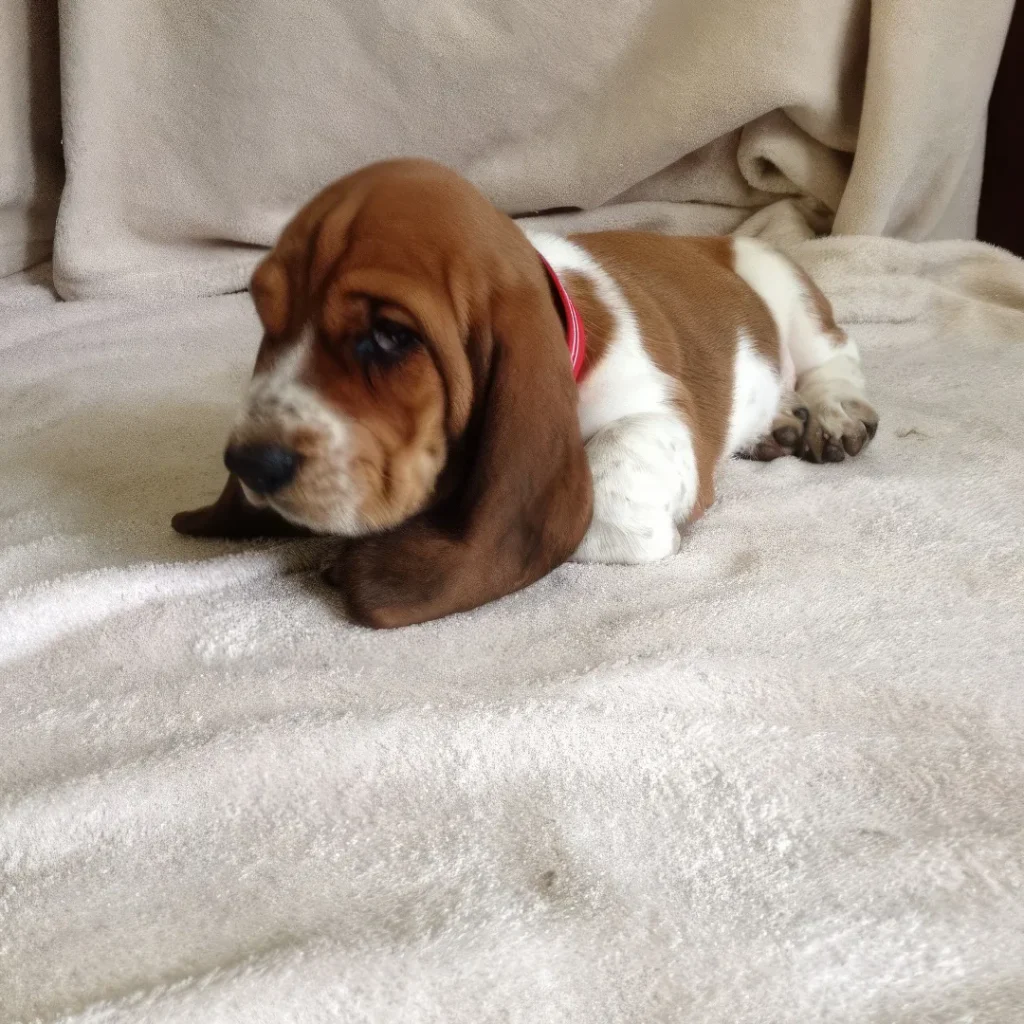
Do Basset Hounds Bark a Lot?
Those deep, soulful eyes come with an equally soulful voice. Bassets are natural watchdogs with an impressive “announcement system,” and they’ll happily tell you about the mail carrier, a passing leaf, or the mysterious clunk from the fridge. My neighbor’s Basset, Louie, once held a full blown conversation with a squirrel for ten minutes straight. Beautiful baritone, but the timing was… early.
Because boredom turns their commentary up to full volume, a little planning goes a long way. Give them jobs: long sniffy walks, scent games around the house, stuffed Kongs, and a good, meaty chew can quiet that urge to “narrate.” I like to scatter a handful of kibble in the yard and let the nose do the work five minutes of sniffing tires out a Basset more than a quick jog.
Training helps, too. I teach a clear “quiet” by first letting them give one or two barks, then calmly marking the brief pause with praise and a treat. Close curtains facing busy streets, play gentle background noise, and practice short alone times so they don’t howl the second you grab your keys. They’ll probably always be chatty it’s part of their charm but with routine and enrichment, you can channel that famous Basset voice into timely alerts instead of all day serenades.
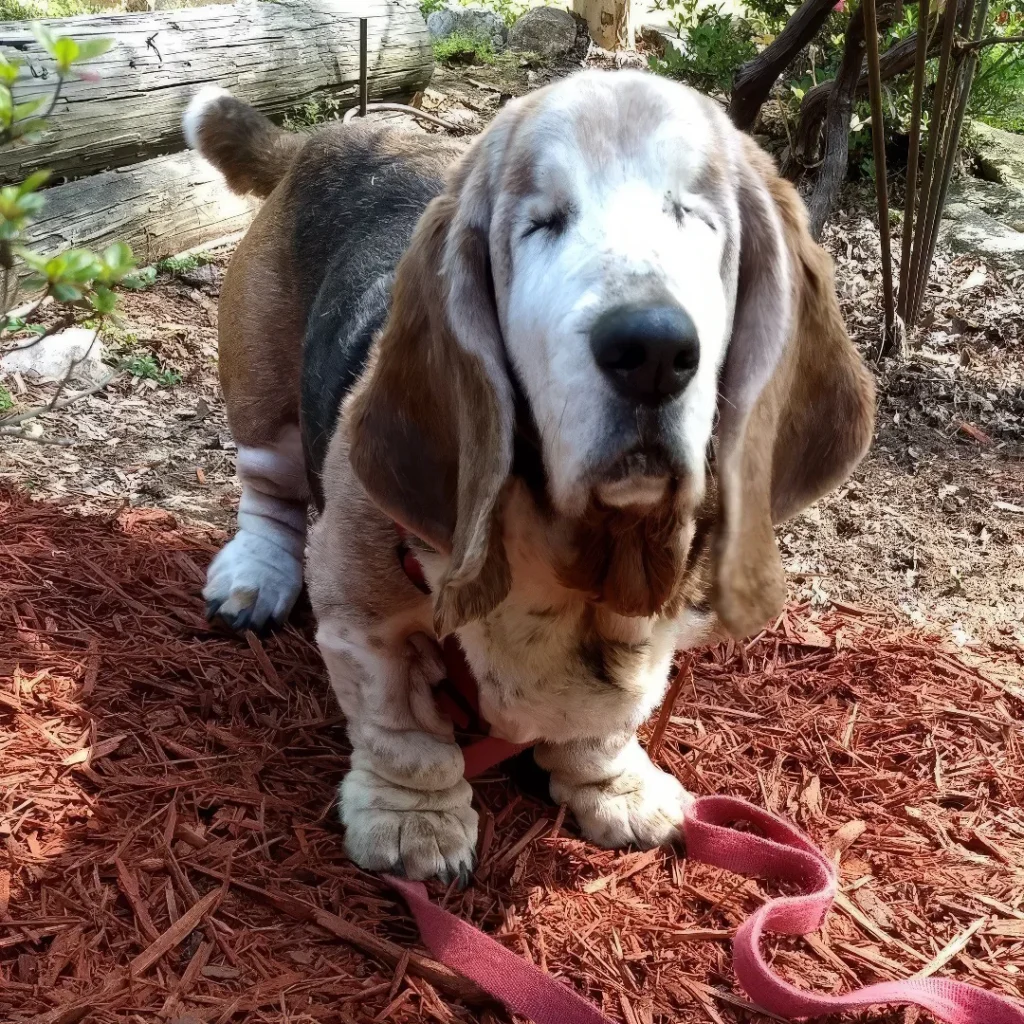
What is the average weight and height of a Basset Hound?
Basset Hounds are wonderfully low to the ground, standing no more than about 35 cm at the shoulder and typically weighing around 22 to 29 kg. Short? Absolutely. Small? Not at all. They’re dense, heavy boned dogs with big chests and solid frames, which is why many people are surprised the first time they go to lift one. https://en.wikipedia.org/wiki/Basset_Hound
I learned that lesson the hard way when I tried to pop my friend’s Basset into the car he felt like a kettlebell with ears. Those short legs and that long, sturdy body make them awkward to pick up, and it’s easy to strain your back or theirs. It’s usually best to keep Bassets on the ground as much as possible. If you do need to lift one, support both the chest and the rear end, keep their spine level, and avoid dangling them by the front legs. Even better, use a ramp for the car and discourage big jumps off couches to protect that long back.
A little practical advice: keep them in that healthy 22-29 kg range with portion control and regular, gentle exercise. Extra weight puts strain on their joints and spine. I like using a well fitted harness for steadier support on walks and teaching a simple “up” cue so they step onto a low platform for grooming instead of being hoisted. Bassets may be short in stature, but they’re big in heart and in heft so plan for ground level living and you’ll both be happier.
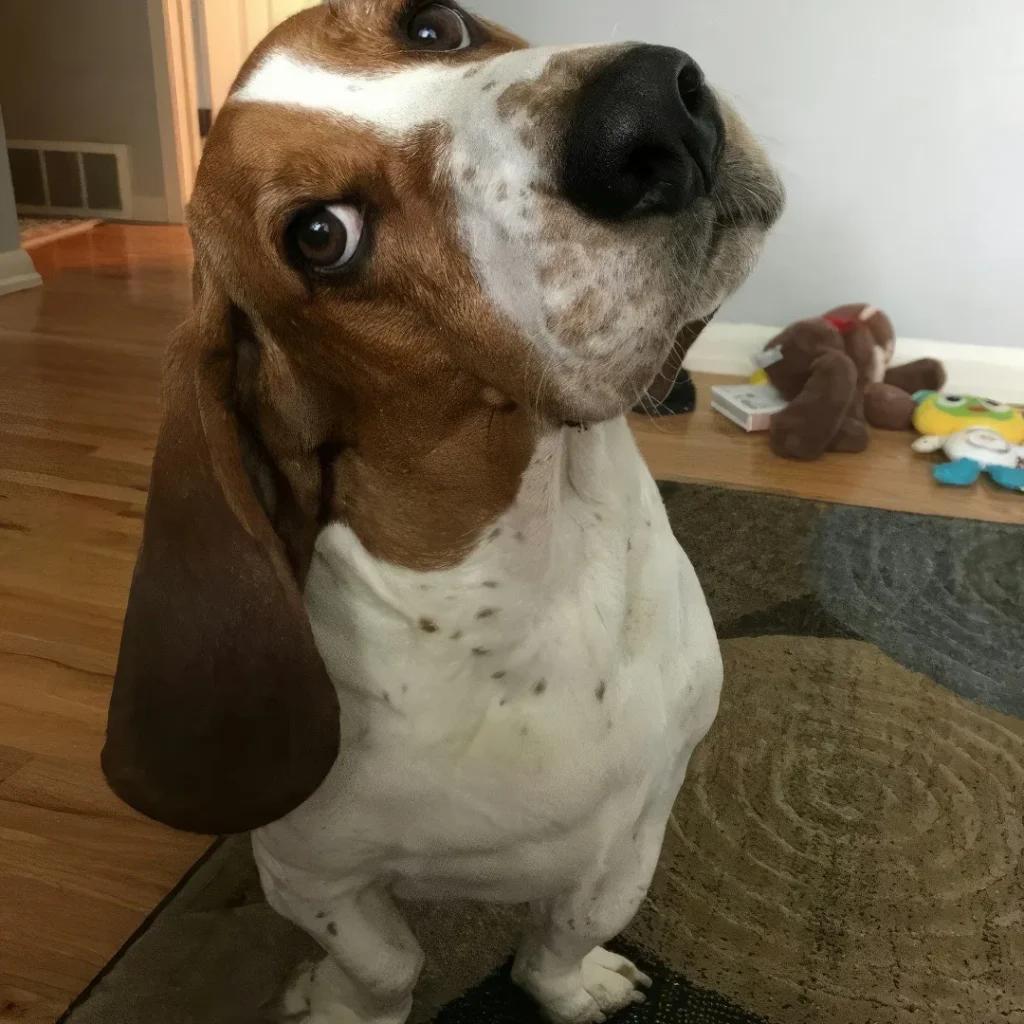
Are Basset Hounds Easy to Train?
Short answer: not exactly easy, but absolutely trainable with patience and a sense of humor. Bassets are smart and independent, and that big, beautiful nose runs the show. I remember calling my Basset three times during a walk he looked right at me, then followed a scent trail like I was the one off course. Once they understand what you’re asking, though, they really do settle into good habits.
Plan on short, cheerful training sessions with high value treats and lots of praise. Make it fun and you’ll get farther than trying to be too stern. I like to use their sniffy superpowers as a reward: we practice “sit” and “wait,” then I release them to “go sniff!” It turns training into a game they actually enjoy. Recall is a slow burn with Bassets, so I practice on a long line in a quiet area and pay big for success think chicken, cheese, and a party voice.
Whether you’ve got a puppy or an adult, keep them in a fenced yard or on a leash outdoors. Even the calm ones can catch a scent and wander off without a second thought. My friend’s Basset once squeezed under a fence after a squirrel, so we learned to check for gaps and reinforce the bottom. For walks, a sturdy harness helps with their enthusiastic pulling when something interesting hits the breeze.
And about furniture discourage jumping on and off. Those short legs and long backs aren’t built for high impact landings. I learned the hard way after a couch leap led to a stiff, sore evening. A ramp or a low ottoman works wonders, and teaching “wait” so you can lift them down is a back saver for both of you. Keep their weight in check and nails trimmed to prevent slips on hard floors.
With consistency, patience, and a bit of creativity, Bassets learn beautifully. Celebrate the small wins, keep sessions light, and remember: with a Basset, the nose negotiates, but kindness and persistence close the deal.
How Do Basset Hounds Behave? A Look at Their Temperament and Personality
Basset Hounds are the poster pups for laid back charm. Around the house, they’re mellow and easygoing happy to snooze on the rug but don’t mistake that for clueless. A Basset’s nose never clocks out. I used to dog sit a Basset named Gus who would nap through a thunderstorm, then suddenly lift his head and give that deep, musical “boof” the second a neighbor opened a sandwich across the street. Calm indoors, yes, but always tuned in.
They’re famously friendly and tend to get along with just about everyone: kids, guests, other dogs, and often even cats if introduced thoughtfully. If you’ve already got a dog at home, a Basset will likely see that as a huge bonus. They’re pack minded and don’t enjoy being alone for long stretches. If your schedule keeps you out of the house most days, you’ll either need to plan for company a second dog, a trusted dog walker, or doggy daycare or consider a more independent breed. I learned this the hard way when I tried leaving Gus for “just a quick hour” without prep; he rearranged my shoe rack to express his feelings.
Early socialization is essential, just like with any breed. Get your Basset pup meeting friendly dogs, hearing city noises, and practicing calm hellos with visitors. Because they’re scent hounds, mix in nose work games: scatter a few treats in the yard or hide a smelly snack under plastic cups and let that incredible nose go to work. It builds confidence and keeps their brain busy. For training, keep sessions short and upbeat, and bring extra tasty treats Bassets can be a little stubborn, but they’re food motivated and respond beautifully to patience and consistency.
In short, think of a Basset as your relaxed, good natured roommate who loves companionship, appreciates a steady routine, and always knows where you hid the snacks. Give them company, gentle structure, and plenty of sniffing time, and you’ll have a loyal friend with a heart as big as those ears.
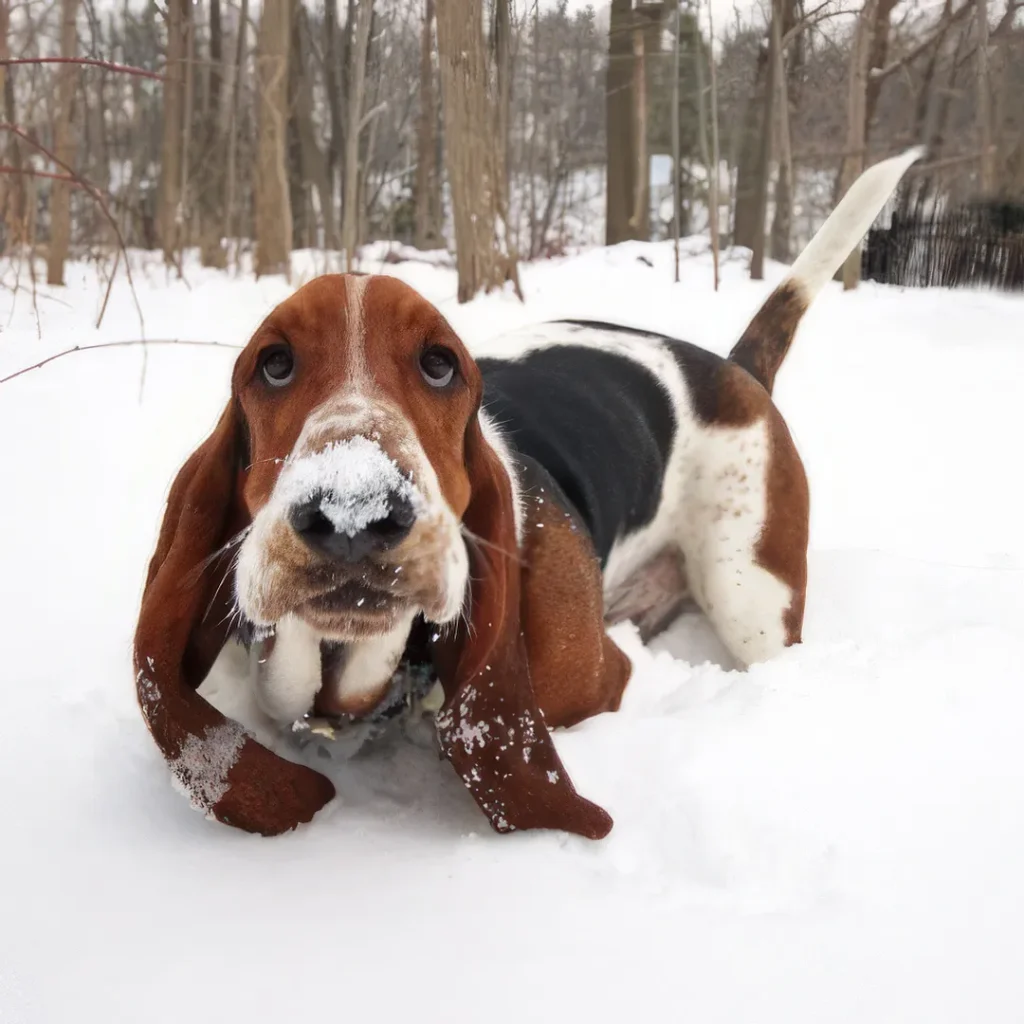
Do Basset Hounds Have Common Health Issues?
Bassets are generally sturdy, happy dogs, but like many breeds, they do have a few health quirks you’ll want to keep an eye on. Think of it as part of the Basset owner toolkit: a little knowledge, some simple routines, and you’re set.
Panosteitis
In growing puppies, you might notice a sudden limp that seems to “move” from one leg to another. That’s often panosteitis (folks call it “pano”), and most pups outgrow it as they reach maturity. My neighbor’s Basset pup, Moose, went through a few mysterious limping episodes before he hit 18 months rest and vet guidance did the trick. If lameness hangs around past two years or your dog seems very painful, get your vet involved. Gentle exercise, not marathon fetch sessions, helps during those growth spurts.
Glaucoma
Bassets are prone to glaucoma, a dangerous rise in eye pressure that can lead to vision loss if it isn’t caught quickly. Redness, squinting, cloudiness, or a suddenly “sad” looking eye are red flags. I like to do a quick “eye check” during cuddle time and schedule regular vet eye exams your vet can measure eye pressure in minutes. If you ever suspect glaucoma, it’s an immediate trip to the clinic.
Gastric Dilatation Volvulus (Bloat)
Because Bassets are deep chested, bloat is a real concern. It comes on fast and can be life threatening. Signs include a tight, swollen belly, unproductive retching, drooling, and pacing like they can’t get comfortable. This is an emergency head to the vet right away. Day to day, I feed smaller meals, use a slow feeder bowl, and keep things calm for an hour before and after meals. It’s also smart to keep your emergency vet’s number on the fridge.
Eyelid and Eyelash Problems
Those soulful, droopy eyes can come with extra maintenance. Irritation from the eyelids rolling in or out (entropion/ectropion) or lashes rubbing can cause tearing and discomfort. I keep a soft cloth handy to wipe away gunk, and if I see redness, squinting, or constant pawing, we’re off to the vet. Sometimes medicated drops help; occasionally surgery is needed.
Ear Infections
Long, velvety ears are adorable and great at trapping moisture. Weekly ear cleanings with a vet approved solution help a lot. I set a Sunday reminder for “ear spa day”: gentle massage, cotton pads (never Q tips), and thorough drying after baths or rainy walks. A yeasty or sour smell is your cue to call the vet.
The bottom line: Bassets can live healthy, happy lives with a little proactive care. Regular checkups, quick attention to changes, and a few simple routines go a long way plus you get extra cuddle time while you do those eye and ear checks. Win win.
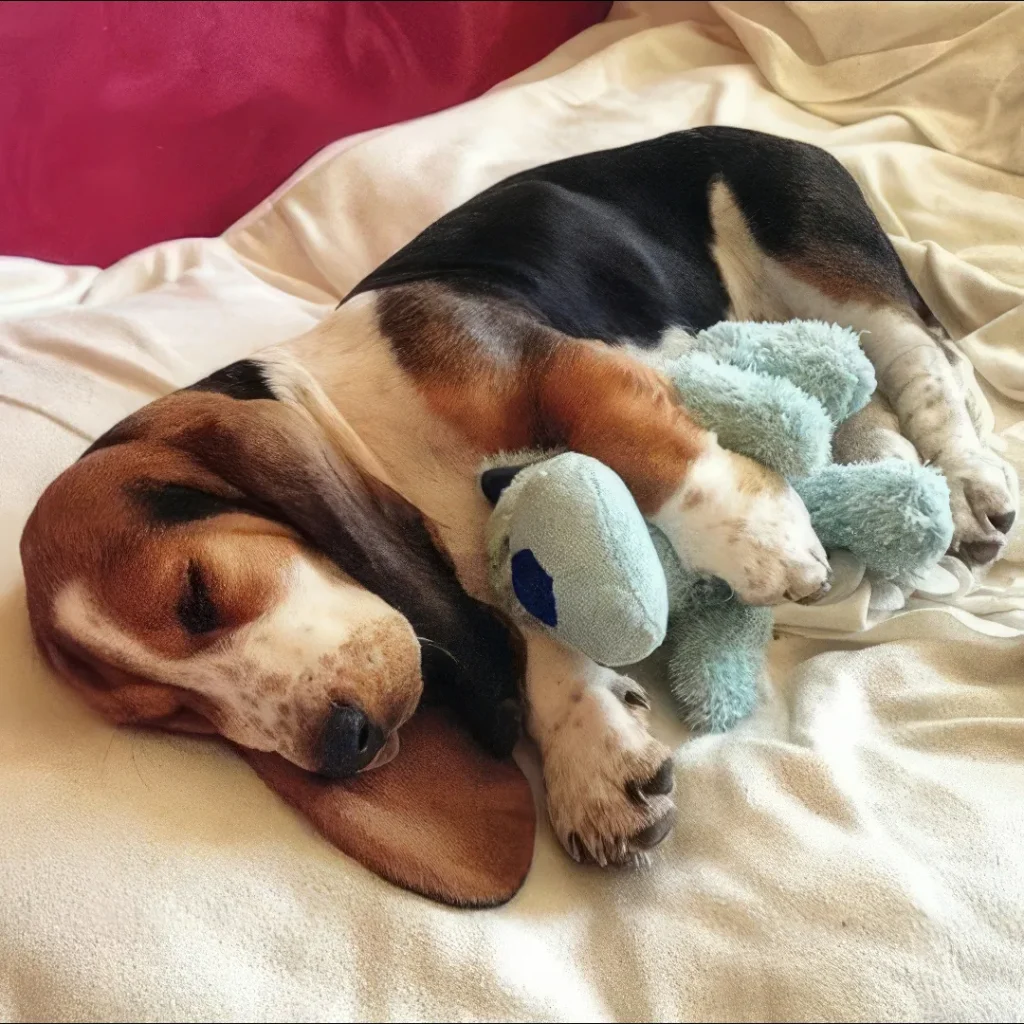
What is the lifespan of a Basset Hound?
A healthy Basset Hound typically lives about 10 to 12 years, which is pretty standard for many breeds. With good weight management, gentle daily walks, and regular vet and ear care, some happily cruise past that. My neighbor’s mellow Basset, Daisy, made it to 14-using ramps and keeping her off stairs kept her long back happy. My simple rule: keep them trim, keep them moving, and keep those silky ears clean.
Ah, the Basset Hound appetite it’s real. These charming, low to the ground snack enthusiasts are famous for acting like they haven’t been fed since last Tuesday. Because they’re so food motivated, it’s smart to serve measured meals rather than letting them graze. I like doing two portioned meals a day and using a proper measuring cup instead of eyeballing it. Start with the guidelines on your dog food bag, then adjust based on your dog’s age, activity level, and body condition. A simple check I use: you should be able to feel ribs under a thin layer of padding and see a slight waist from above. If your Basset’s looking more barrel than hourglass, it’s time to trim portions and boost movement.
Bassets can pack on pounds quickly, and extra weight is tough on their long backs and sturdy joints. The good news? With consistent exercise and mindful feeding, many Bassets stay in great shape. Think daily sniffy walks, short play sessions, and training games that make them work for kibble. I’m a big fan of slow feeder bowls and snuffle mats my friend’s Basset, Gus, stopped inhaling dinner in 20 seconds once we switched to a puzzle feeder. Keep treats tiny and count them as part of the daily calories; a few pea sized rewards go a long way. And if you have a creative counter surfer, store food in lidded containers. Balance the appetite with structure and activity, and your Basset can be both satisfied and slim.

Basset Hound FAQs
How far can a Basset Hound walk a day?
Don’t let those short legs fool you Bassets can keep moving for longer than you’d expect. With the right conditioning, some can happily cover surprising distances; I’ve met a marathoner’s Basset who logged up to 12 miles alongside training walks. Start modestly and build up, especially with puppies or seniors. I like to plan “sniff breaks” every 10-15 minutes because their noses are working just as hard as their legs. Bring water, watch for heat, and keep an eye on their joints and paws. My old Basset, Mabel, could do an easy 6-8 miles along a flat beach path, then snooze like a champion for the rest of the afternoon.
Are Basset Hounds good for first time owners?
They’re bright, affectionate, and charming but that clever mind comes with stubborn streaks. Without consistent training, a Basset can become tough to manage, especially since their nose often votes against your plans. House training can be slow, recall can be more “optional,” and grooming (hello, drool and ear care) needs regular attention. For many first time owners, there are easier breeds to learn with. If your heart is set on a Basset, line up a trainer early, use positive reinforcement, and commit to routines. One of my friends did weekly puppy classes and a daily 10-minute training session, and it made a night and day difference.
Can you take a Basset Hound hiking?
Absolutely just think “steady” rather than “speedy.” Bassets are great companions for several mile hikes on gentler, flatter terrain. Keep the pace easy, build endurance gradually, and avoid long, steep scrambles that can be rough on their backs and elbows. I always use a well fitted harness to protect the neck and bring extra water and snacks. Keep them leashed once a scent catches their attention, they can forget the whole world. After hikes, do a quick ear and belly check for burrs and ticks; their low slung bodies are magnets for trail souvenirs. One time mine waddled proudly out of a field carrying half the meadow in his ears.
Why do Basset Hounds howl?
That soulful bay is part of their heritage. In the field, Bassets howl to communicate with people and other dogs, and that instinct follows them home. Sirens, doorbells, or just the mail carrier can cue a chorus. It’s normal, but you can manage the volume with exercise, mental enrichment (snuffle mats and scent games are gold), and a calm “quiet” cue. I practice by waiting for a moment of silence, then rewarding the hush. It’s not about stopping the song forever just teaching them to put it on pause when needed. Your neighbors will thank you.
Do Basset Hounds cuddle?
Oh yes. These are world-class snugglers. Bassets tend to bond closely with their people and love curling up for long, heavy, contented naps bonus points if there’s a blanket involved. As they mature and mellow, cuddle sessions get even better. Expect some drool and snoring as part of the charm; I’ve had a Basset snore through an entire movie night while pinning my leg like a warm sandbag. If you want a dog who hikes in the morning and couch potatoes in the evening, a Basset will happily oblige.
Quick tips from the trail and the couch:
– Keep walks and hikes consistent, build slowly, and favor flat routes.
– Train early, use treats and patience, and don’t expect instant recall.
– Clean ears regularly and watch weight to protect joints.
– Embrace the cuddles and keep a towel handy for drool.
Disclaimer:
This article is for informational purposes only and doesn’t replace professional veterinary or training advice. Always consult a certified vet or dog trainer for guidance specific to your pup.
